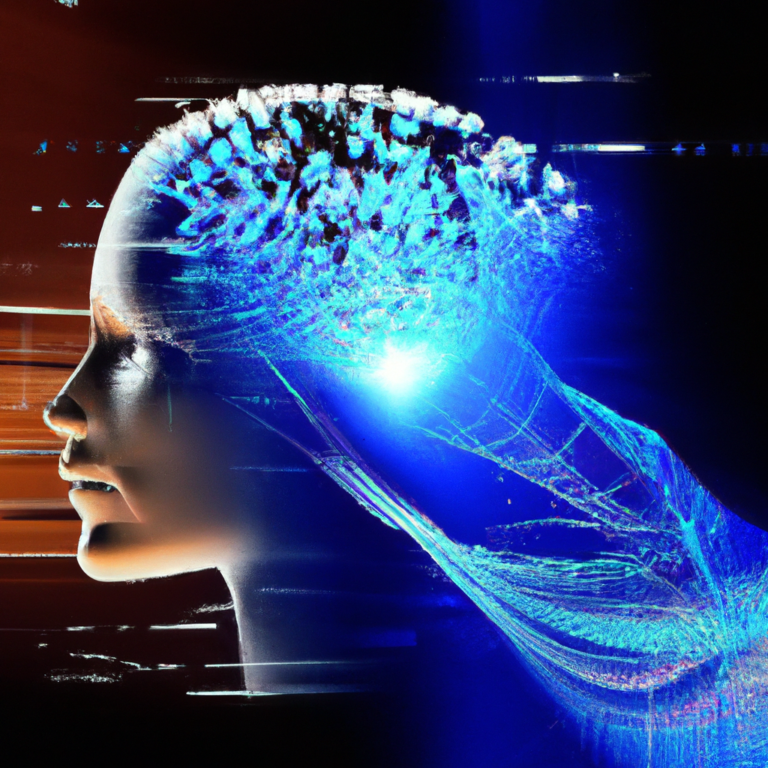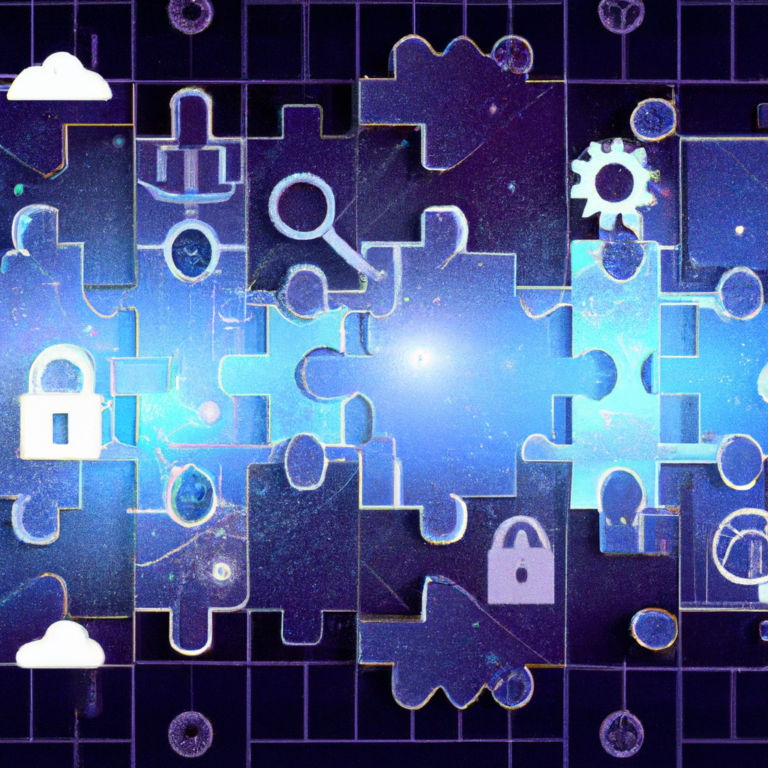The Impact Of AI On Society

Artificial Intelligence (AI) has become an integral part of our society, revolutionizing various aspects of our lives. From voice assistants that help us with everyday tasks to autonomous vehicles that navigate our roads, AI has started to reshape the way we live, work, and interact. However, with these advancements comes a series of profound implications that cannot be ignored. This article explores the undeniable impact of AI on society, delving into the benefits, challenges, and ethical considerations surrounding this rapidly evolving technology. Get ready to uncover a world where machines think, learn, and interact, forever changing the dynamics of our modern civilization.

Education
AI-powered learning platforms
AI-powered learning platforms are revolutionizing the way education is delivered and accessed. These platforms leverage the power of artificial intelligence to enhance the learning experience for students. By analyzing data on students’ performance and behavior, AI can identify areas where individual students may be struggling and provide customized recommendations and resources to address those needs. This personalized approach helps students learn at their own pace and focus on areas of weakness, ultimately improving their overall academic performance.
Customized learning experiences
With AI, education is no longer a one-size-fits-all model. AI technologies can create customized learning experiences tailored to each student’s unique needs, interests, and learning style. By analyzing data on students’ past performance, preferences, and engagement levels, AI can generate personalized learning pathways and content. This allows students to learn in a way that suits them best, maximizing their engagement and understanding of the material. Customized learning experiences empower students to take ownership of their education and foster a love for lifelong learning.
Automation of administrative tasks
AI is also streamlining administrative tasks in the education sector, freeing up valuable time for educators to focus on teaching. Tasks such as grading, attendance tracking, and generating reports can be automated with AI, reducing the administrative burden on teachers and staff. This automation not only saves time but also improves accuracy and efficiency in administrative processes. By automating these routine tasks, educators can dedicate more time and energy to engaging with students and providing quality instruction.
Addressing educational inequality
One of the most promising applications of AI in education is its potential to address and mitigate educational inequality. AI-powered learning platforms can provide access to quality education resources and personalized learning experiences to students who may not have access to traditional educational opportunities. By leveraging AI, students in remote areas, under-resourced schools, and marginalized communities can benefit from high-quality education tailored to their needs. This has the potential to bridge the education gap and provide equal opportunities for all students, regardless of their socio-economic background.
Employment
Automation of jobs
The rise of AI brings both excitement and concerns about the impact on employment. AI automation has the potential to replace certain jobs that are repetitive or require low-level cognitive skills. Tasks such as data entry, manual labor, and routine decision-making can be automated with AI technologies. While this may lead to job displacement in some industries, it also opens up new opportunities for the workforce to upskill and pursue higher-value roles.
Creation of new job roles
While certain jobs may be automated, AI also creates new job roles in emerging industries. As AI technologies become more advanced, there will be a growing demand for professionals with expertise in AI development, data analysis, and machine learning. These new job roles will require a combination of technical skills and domain knowledge, and they have the potential to be more intellectually stimulating and rewarding. The transition to an AI-powered workforce may require retraining and reskilling programs to ensure individuals can adapt to the changing job market.
Changes in workplace dynamics
The integration of AI technologies in the workplace will bring about significant changes in workplace dynamics. AI can augment human capabilities, enabling workers to focus on tasks that require creativity, critical thinking, and emotional intelligence. This shift in roles can enhance collaboration and teamwork as humans and AI systems work together to achieve common goals. However, it’s important to address any concerns or anxieties among workers about job security and the impact of AI on their roles. Clear communication and training programs can help ease the transition and ensure a positive work environment.
Impact on job market
The impact of AI on the job market is complex and multifaceted. While certain jobs may be at risk of automation, the introduction of AI technologies also has the potential to drive economic growth and create new opportunities. Industries such as healthcare, finance, and transportation are likely to see significant transformations with AI integration. It’s important for policymakers, educators, and businesses to anticipate and prepare for these changes to ensure a smooth transition and to mitigate any potential negative effects on employment.
Healthcare
Improved diagnostics and treatment
AI is revolutionizing healthcare by improving diagnostics and treatment outcomes. AI-powered algorithms can analyze medical data, such as medical images, patient records, and genetic information, to assist healthcare professionals in making accurate diagnoses and treatment plans. By leveraging AI, healthcare providers can detect patterns and correlations that may be difficult to identify with the human eye alone. This can lead to earlier detection of diseases, more precise treatment plans, and improved patient outcomes.
Health monitoring and personalization
AI technologies are also transforming the way we monitor and manage our health. Wearable devices equipped with AI algorithms can track vital signs, sleep patterns, and activity levels, providing individuals with real-time insights into their health status. AI can analyze this data and provide personalized recommendations for maintaining or improving health. For example, AI-powered virtual assistants can offer reminders to take medication, suggest healthy lifestyle changes, and provide guidance for managing chronic conditions. This personalized approach empowers individuals to take charge of their own well-being and make informed decisions about their health.
Support in medical research
AI has the potential to accelerate medical research by processing and analyzing vast amounts of data in a fraction of the time it would take humans. AI algorithms can analyze research papers, clinical trials, and patient data to discover patterns, predict outcomes, and identify potential treatments. This can help researchers make breakthroughs in understanding diseases, developing new drugs, and improving treatment protocols. AI can also assist in clinical trials by identifying suitable candidates and optimizing trial design. The use of AI in medical research holds great promise for advancing our understanding of diseases and finding innovative solutions to complex medical problems.
Ethical considerations
As AI becomes more integrated into healthcare, ethical considerations become increasingly important. Issues such as data privacy, algorithm bias, and the responsibility of AI systems in decision-making must be carefully addressed. The collection and use of patient data must be done in a manner that protects individuals’ privacy and maintains trust between patients and healthcare providers. Transparent and accountable AI algorithms are necessary to ensure fairness and prevent biases in diagnostic and treatment recommendations. It’s essential to have robust ethical guidelines and regulations in place to navigate the complexities of AI in healthcare and prioritize patient well-being.

Transportation
Autonomous vehicles
One of the most visible impacts of AI in transportation is the development of autonomous vehicles. AI-powered systems, such as self-driving cars, have the potential to revolutionize transportation by enhancing safety, efficiency, and accessibility. Autonomous vehicles use AI algorithms to perceive and interpret their surroundings, make decisions, and navigate routes without human input. This technology holds the promise of reducing human error, the leading cause of accidents, and improving overall road safety.
Enhanced safety and efficiency
AI technologies can significantly enhance the safety and efficiency of transportation systems. AI algorithms can analyze real-time traffic data, weather conditions, and historical patterns to optimize routes and avoid congestion. This not only reduces travel time but also decreases fuel consumption and environmental impact. AI can also aid in predictive maintenance, detecting potential issues in vehicles before they become major problems. With AI-powered safety and efficiency enhancements, transportation systems can become more reliable, sustainable, and user-friendly.
Reduced traffic congestion
AI has the potential to alleviate traffic congestion, a major challenge in urban areas. By analyzing traffic patterns and providing real-time congestion updates, AI systems can optimize traffic flow and suggest alternative routes to drivers. AI-powered traffic management systems can dynamically adjust traffic signal timings based on current conditions, reducing wait times and improving traffic flow. The reduction in traffic congestion not only saves time for individuals but also results in lower fuel consumption, reduced pollution, and improved air quality in cities.
Implications for public transportation
AI technologies are also transforming the public transportation landscape. AI algorithms can optimize public transportation routes, schedules, and capacities based on passenger demand patterns. This leads to more efficient and cost-effective services, increasing accessibility for individuals who rely on public transportation. Additionally, AI-powered systems can improve the overall passenger experience by providing real-time information, personalized recommendations, and seamless ticketing processes. The integration of AI in public transportation can make it a more attractive and viable option for commuters, reducing reliance on private vehicles and easing traffic congestion.
Communication
Natural language processing
AI-powered technologies are revolutionizing communication by enabling natural language processing. Natural language processing (NLP) refers to AI systems’ ability to understand and respond to human language in a manner that is similar to human comprehension. NLP powers virtual assistants, voice assistants, and chatbots, enabling users to interact with technology using everyday language. This technology has the potential to enhance communication and make technology more accessible to a wider range of individuals.
Chatbots and virtual assistants
AI-powered chatbots and virtual assistants are becoming increasingly prevalent in various industries. These AI systems can engage in conversations with users, answer questions, provide recommendations, and perform tasks. Chatbots and virtual assistants have the potential to streamline customer service, provide 24/7 support, and improve user experiences. By leveraging AI, companies can automate repetitive tasks, reduce wait times, and personalize interactions, ultimately enhancing customer satisfaction.
Enhanced translation services
AI technologies are revolutionizing translation services by enabling real-time and accurate translations across languages. AI-powered translation systems can analyze vast amounts of multilingual data and learn patterns, nuances, and idiomatic expressions. This allows for more accurate and contextually appropriate translations. From online platforms to international business meetings, AI translation services facilitate effective communication and bridge language barriers, fostering global collaboration and understanding.
Privacy and security concerns
The integration of AI in communication raises important privacy and security concerns. As AI technologies process and analyze massive amounts of user data, it’s crucial to ensure that individuals’ data privacy is protected. AI systems must be designed with robust security measures to prevent unauthorized access or breaches. Additionally, transparency in data usage and user consent is essential to maintain trust between users and AI systems. Clear regulations and ethical guidelines are necessary to govern the responsible use of AI in communication and safeguard individuals’ privacy rights.
Finance
Automated financial analysis
AI is transforming the finance industry by automating financial analysis processes. AI-powered algorithms can analyze vast amounts of financial data, identify patterns, and make predictions. This allows for more accurate financial forecasting, risk assessment, and investment recommendations. Automated financial analysis enables faster decision-making and reduces the potential for human bias or error in financial operations. By leveraging AI, financial institutions can improve efficiency, minimize risks, and enhance their overall performance.
Fraud detection and prevention
AI technologies are invaluable in detecting and preventing fraud in financial transactions. AI algorithms can analyze patterns of fraudulent behavior, detect anomalies, and raise alerts in real-time. This helps financial institutions identify and mitigate potential risks, protecting both themselves and their customers from financial fraud. AI-powered fraud detection systems can process large volumes of data, identify suspicious activities, and adapt to emerging fraud trends, making them an indispensable tool in maintaining the integrity and security of financial transactions.
Personalized financial services
AI has the potential to revolutionize personalized financial services by leveraging individual data to tailor financial recommendations and advice. AI platforms can analyze customers’ financial history, spending patterns, and goals to provide customized financial planning and investment strategies. This personalized approach helps individuals make informed decisions regarding savings, investments, and financial well-being. By harnessing the power of AI, financial institutions can offer more accessible and relevant financial services to their customers.
Impact on banking and investments
The integration of AI in finance has profound implications for banking and investments. AI-powered chatbots and virtual assistants are transforming customer interactions with banks, providing personalized recommendations, addressing inquiries, and facilitating transactions. AI algorithms can analyze market trends and data to make investment recommendations and optimize portfolios, aiding both individual investors and financial institutions. The application of AI in finance enhances efficiency, accuracy, and customer experiences, positioning the industry for transformative growth.
Entertainment
Personalized content recommendations
AI technologies are revolutionizing the entertainment industry by providing personalized content recommendations to users. Streaming platforms, social media, and online marketplaces leverage AI algorithms to analyze users’ preferences, behavior, and historical data to recommend content tailored to their interests. This personalized approach enables users to discover new movies, music, books, and products that align with their tastes, ultimately enhancing user satisfaction and engagement.
Virtual reality and augmented reality experiences
AI-powered virtual reality (VR) and augmented reality (AR) experiences are transforming the entertainment landscape. AI algorithms can create immersive and interactive experiences in VR and AR environments, enhancing storytelling, gaming, and live events. AI analyzes user inputs, movements, and gestures to create dynamic and responsive virtual worlds. This technology enables users to engage with content in unprecedented ways, blurring the boundaries between the physical and digital worlds.
AI-generated content creation
AI technologies have the potential to revolutionize content creation in the entertainment industry. AI-powered algorithms can analyze vast amounts of data, such as images, videos, and text, to generate original content. From generating music to scripting dialogue and even creating entire virtual worlds, AI-generated content pushes the boundaries of creativity and innovation. However, it’s crucial to maintain a balance between human creativity and the use of AI in content creation, ensuring that ethical considerations and human judgment are taken into account.
Ethical considerations in entertainment
The integration of AI in entertainment raises important ethical considerations. The use of AI-generated content raises questions about copyright, intellectual property, and the role of human artists in the creative process. It’s essential to encourage responsible AI development that respects existing laws and ensures that human creativity is valued and protected. Transparent disclosure of AI-generated content and clear attribution are necessary to maintain trust between creators, consumers, and AI systems in the entertainment industry.
Ethics and Privacy
AI bias and fairness
One of the key ethical concerns surrounding AI is the potential for bias and unfairness in AI systems. AI algorithms are trained using vast amounts of data, and if the data used for training contains biases, the resulting AI models may reflect those biases. This can lead to discriminatory outcomes in areas such as hiring, lending, and criminal justice. It’s crucial to ensure that AI systems are designed and trained with diverse and representative data to mitigate bias and promote fairness. Continuous monitoring and testing of AI systems for biases are essential to create fair and equitable AI solutions.
Data privacy and security
As AI technologies rely on vast amounts of data, data privacy and security are paramount. The collection, storage, and processing of personal data must comply with relevant privacy laws and regulations. AI systems should implement robust security measures to protect sensitive data from unauthorized access or breaches. Additionally, transparency in data usage and user consent is crucial to maintain trust in AI systems. Governments and organizations must work together to establish clear regulations and ethical guidelines to safeguard individual data privacy and security.
Accountability and transparency
AI systems should be accountable for their actions and decisions. Transparent AI models and algorithms help users understand how AI systems arrive at their conclusions and recommendations. This promotes trust and allows users to evaluate the reliability and fairness of AI-driven outcomes. Additionally, organizations that develop and deploy AI solutions should be accountable for addressing any negative impacts or unintended consequences that may arise. A culture of transparency, accountability, and continuous improvement is essential to ensure responsible AI development and deployment.
Legal and regulatory challenges
The development and deployment of AI technologies raise numerous legal and regulatory challenges. As AI becomes more integrated into various sectors, it’s crucial to establish legal frameworks and regulations that address potential risks and provide guidance for the responsible use of AI. Legal considerations include intellectual property rights, liability for AI-driven actions, and accountability in decision-making processes. Policymakers, legal experts, and industry leaders must work together to develop comprehensive and adaptive laws and regulations that balance innovation, ethical considerations, and societal impact.
Social Impact
Social media algorithms and filter bubbles
AI algorithms play a significant role in shaping the content users see on social media platforms. These algorithms analyze user preferences, behavior, and past interactions to curate personalized content feeds. While this enhances user experiences, it also creates filter bubbles, where individuals are exposed primarily to content that aligns with their existing beliefs and interests. This can lead to echo chambers and hinder the exchange of diverse perspectives and ideas. It’s crucial to strike a balance between personalization and exposure to diverse content to ensure a healthy and inclusive online community.
Deepfakes and misinformation
AI technologies have given rise to the creation of deepfakes, which are manipulated or synthesized audio, images, or videos that convincingly depict individuals doing or saying things they never did. Deepfakes raise significant concerns about misinformation, disinformation, and the erosion of trust in media. It’s essential to develop robust detection and verification techniques to combat deepfakes and ensure the integrity of digital content. Education and media literacy also play a vital role in equipping individuals with the skills to critically evaluate information and navigate the prevalence of deepfakes in the digital landscape.
Online harassment and hate speech
The rise of AI-powered communication platforms has also brought challenges related to online harassment and hate speech. AI algorithms can be used to detect and moderate offensive content, reduce cyberbullying, and foster a safer online environment. However, striking the right balance between content moderation and freedom of expression is a complex task. It’s important to implement AI systems that can accurately identify and mitigate online harassment and hate speech while minimizing the risk of censorship or silencing of marginalized voices.
Tech addiction and social isolation
The pervasive use of AI technologies in daily life raises concerns about tech addiction and social isolation. AI-powered devices and platforms are designed to capture attention and keep users engaged for extended periods. This can lead to addictive behaviors and a dependence on technology, negatively impacting individuals’ mental health and social interactions. It’s crucial to promote responsible and mindful use of AI technologies, establish digital well-being norms, and encourage offline connections to mitigate the potential negative social impacts of AI.
Ethical AI Development
Responsible AI design and deployment
The development and deployment of AI systems require a responsible and ethical approach. Stakeholders involved in AI development, including researchers, engineers, and policymakers, must prioritize ethical considerations throughout the entire process. This includes considering potential biases, ensuring algorithm transparency, and promoting fairness and accountability. A multidisciplinary approach that includes experts from various fields, such as ethics, law, and social sciences, can help ensure that AI systems are designed and deployed in a manner that aligns with societal values and ethics.
Bias testing and mitigation
AI systems are susceptible to biases, both explicit and implicit, present in the data they are trained on. It’s essential to proactively identify and address bias in AI systems to ensure fairness and prevent discrimination. Bias testing should be conducted at each stage of development, from data collection to algorithm design and deployment. Effective mitigation strategies, such as diverse and representative training data, algorithmic adjustments, and continuous monitoring, can help reduce biases and promote fair outcomes in AI applications.
Regulating AI technologies
The rapid advancement of AI technologies necessitates clear regulations and guidelines to navigate potential risks and harness the benefits. Governments and regulatory bodies play a crucial role in establishing ethical and legal frameworks to govern the development, deployment, and use of AI systems. These regulations should address issues such as accountability, transparency, data privacy, algorithmic fairness, and potential social impacts. Collaboration between policymakers, industry leaders, and experts is essential to strike the right balance between innovation, ethical considerations, and public interest.
Public awareness and education
As AI becomes more integrated into various aspects of society, it’s crucial to raise public awareness and promote education about AI technologies and their societal impacts. Educating individuals about the capabilities and limitations of AI, as well as the ethical considerations, empowers them to make informed decisions and engage in meaningful discussions about AI’s role in society. Public awareness initiatives, educational programs, and collaborations between academia, industry, and policymakers can contribute to creating a well-informed and AI-literate society.






